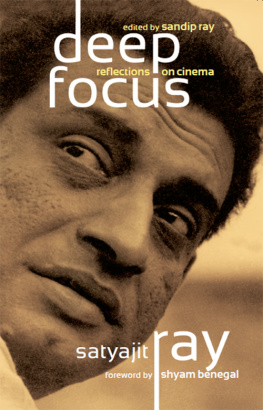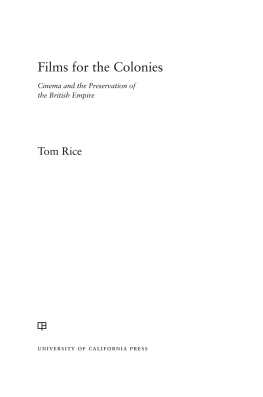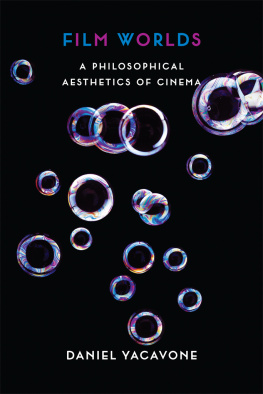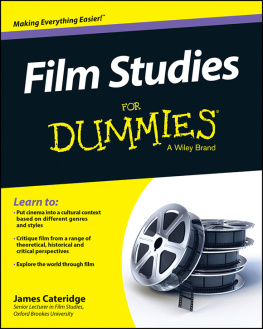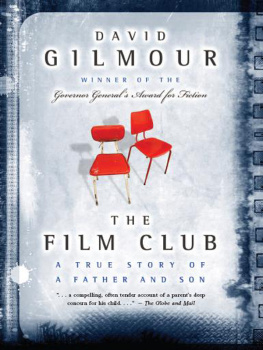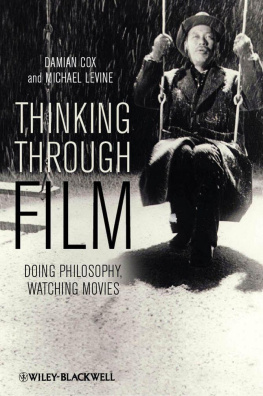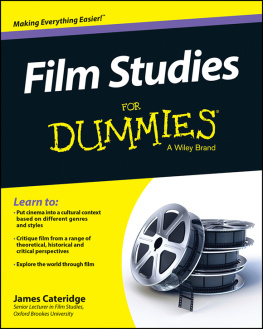How Films Tell Stories
The Narratology of Cinema
Larry A. Brown
CREATIVE ARTS PRESS
Second edition
Copyright 2018 by Larry A. Brown
All rights reserved. No part of this work may be reproduced, distributed or transmitted in any form or by any means, including photocopying, recording, or other electronic or mechanical methods, without the prior written permission of the author, except in the case of brief quotations embodied in critical reviews and certain other noncommercial uses permitted by copyright law.
Creative Arts Press
An imprint of Sienna Bay Press
P. O. Box 158582
Nashville, TN 37215
Cover design by Bob Hoskins. Graphic art used by permission.
T he field of narratology has proven to be a vibrant and productive area of study since its inception in the 1960s, but much of its insightful contribution to the understanding of narrative has remained isolated within the relatively small community of scholars who read one anothers works and debate their merits in academic journals. For those interested in storytelling who are not part of this community, reading narrative theory offers several challenges due to a lack of familiarity with the history of the field and the confusing technical jargon over which even the experts do not agree.
The present work seeks to correct this problem by offering a concise introduction specifically for film enthusiasts, providing an overview of the major theories of narrative from the past fifty years in an easy-to-read style. Each chapter discusses the theories applied to film examples with the goal of leading readers to consider questions which may be useful in their own analysis of films and their narrative strategies.
Since this text is intended primarily for film students rather than narratology scholars, I make few claims to advancing the field or to originality except perhaps in the manner of presentation of these concepts. I have chosen to focus most of my attention on popular narrative cinema in the Hollywood tradition with some references to foreign, independent, and experimental films as they prove useful in illustrating the theories.
I would like to recognize several people who have been significant influences on my academic life and the writing of this book. Dr. Sue Berry (David Lipscomb College), Dr. Ted Starnes (Abilene Christian University), and Dr. Tice Miller (University of Nebraska-Lincoln) were inspirational professors in my college and graduate school years, always challenging me to achieve the highest level of scholarship.
Most importantly, Im grateful for the loving support and encouragement of my wife Shannon, a gifted author herself, who insisted that I write this book.
Readers are encouraged to visit the companion website to this book for links to some of the film scenes mentioned in the text.
www.larryavisbrown.com
1 INTRODUCTION TO NARRATOLOGY
N arratology is the study of storytelling, seeking a detailed understanding of the art of narrative. Its theories attempt to define the basic elements of narrative, identify its common strategies, and organize these concepts into a comprehensive system. Just as a mechanic might take a car apart to learn how it works, narratologists dissect stories to comprehend how they function to create meaning in the mind of the reader.
Narratology offers an empirical analysis of narrative, desiring to be descriptive rather than prescriptive. In other words, it attempts to describe the phenomenon of narrative as it is rather than prescribing how it should be. Narratology does not aim to produce rules for how to write a good story but rather strives to identify the fundamental attributes of all stories, from classics like Homers Iliad and Shakespeares Hamlet to a childs retelling of the Three Little Pigs. Furthermore, the goal of narratology should not be confused with that of criticism which involves interpreting the meaning of individual works. Narratology studies the art of storytelling in general in an attempt to understand not What does this text mean? but How does it mean?
As an identifiable academic discipline, narratology has existed since the 1960s, although it has built on earlier efforts by novelists Henry James (The Art of Fiction, 1884) and E. M. Forster ( Aspects of the Novel , 1927), the Russian Formalists of the 1920s, and ultimately on the ancient Poetics of Aristotle (330 BCE), the earliest example of a comprehensive narrative theory. The first generation of narratologists focused on narrative prose such as the novel or short story, but since the 1980s researchers have expanded their investigations to include other forms of storytelling such as film, television, plays, comics, and electronic games.
Some scholars choose to define narrative exclusively as the act of a narrator telling a tale in a novel or short story to distinguish it from enacted media such as drama and film which depict a story through the performances of actors. In his Dictionary of Narratology (1987) Gerald Prince excluded drama from the category of narrative since no narrator is involved. In contrast, Seymour Chatman in his influential Story and Discourse: Narrative Structure in Fiction and Film (1978) extended the concept of narrative to cover different types of media. A film, a play (read or performed), a ballet, a comic book, and a computer game may all communicate a story and thus fall under the category of narrative. Likewise, in her Introduction to Narratology (2009) Monica Fludernik defines narrative as a representation of a possible world in a linguistic and/or visual medium (6). Thus, in recent years studies of narratology have included film and other media in their theoretical considerations.
Story and Discourse
One fundamental concept of narratology is the distinction between story and discourse. The elements of story can be isolated and analyzed apart from the medium through which the story is communicated to an audience, be it novel, film, or comic strip. Discourse refers to the actual form through which the story is conveyed. In other words, we may distinguish in theory between what happens in the story itself and how the story is told.
For example, the story of Hamlet can be read as it occurs in Shakespeares famous tragedy, but it also has been presented in films by directors such as Lawrence Olivier, Franco Zeffirelli, and Kenneth Branagh. Each film takes the essential elements of the story with its events and characters and provides a unique version of the story through the medium of cinema. The interpretation of the actors, the editing and reordering of scenes, and the aesthetic qualities of lighting, sound, and cinematography all affect how the viewer comprehends the basic story.
We may distinguish discourse from story first by the way in which a film often reveals the story events in non-chronological order. We assume that events in the fictional world occur chronologically, but a film does not have to deliver these events in this order. Forrest Gump (1994) begins with the title character sitting at a bus stop. As other people join him on the bench, he recounts the story of his life which we see in a series of flashbacks. Eventually his tale arrives at the present time in the film when he explains that he has come here to meet his lifelong friend Jenny, and the narrative continues from this point in chronological order to the end. To understand the story, the viewer must mentally reconstruct the order of events in Forrests life as they occurred within the fictional world.
Next page

